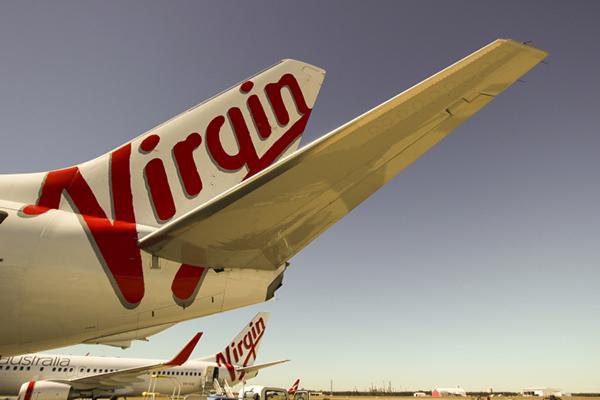
Welcome to Routes’ look at how the Asia-Pacific aviation market is responding to the COVID-19 coronavirus pandemic, helping you understand the schedule changes and manage the impact so we can navigate through this crisis together.
The data is supplied by OAG using its OAG Schedules Analyser tool unless stated. Please note: the COVID-19 crisis remains fluid as airlines around the world continue to make dramatic capacity cuts. OAG has taken several steps to ensure the data is as accurate as possible.
Asia-Pacific capacity
After capacity reduced by almost 14 million departure seats during the previous 14 days, the rate of decline across the Asia-Pacific region slowed last week (w/c April 13). Overall capacity totaled almost 17.1 million departure seats, a reduction of 373,275 on the previous week, or 2.1%.
In numerical terms, South East Asia lost the most seats, falling by 1.07 million seats. In percentage terms, the biggest capacity drop was in the Southwest Pacific where the number of departure seats reduced by almost a third to 290,830. Compared to Jan. 6, 2020, the total weekly capacity in Asia-Pacific has now fallen by 61%.
https://infogram.com/covid-asia-capacity-withc-13-april-1h7v4p75pq5j4k0…
China became the world’s largest aviation market by capacity last week following growth domestically alongside steep cuts in the US. The OAG figures show there were 8.66 million departure seats from and within China, 98.7% of which were domestic, compared with 8.22 million in the US.
The total week-on-week growth in China equated to 584,413 seats, or 7.2%. However, while there continues to be an upswing in domestic capacity, actual demand is expected to be significantly weaker as load factors are reported to be low.
While capacity is growing in China, there continues to be large reductions in most other markets across the Asia-Pacific region. The biggest drop last week in numerical terms was in Malaysia where the total number of departure seats reduced by 78.8% to 121,867. The government of Malaysia has introduced a control order that restricts the entry of foreign nationals until April 28.
In the Philippines, capacity dropped by 406,577 seats week-on-week to just 49,820 seats. Elsewhere, Japan and Indonesia lost 358,102 seats and 177,912 seats from their respective markets.
However, Vietnam’s Ministry of Transport has this week relaxed restrictions on some domestic routes in the country, including increasing the number of permitted frequencies on flights between the capital Hanoi and Ho Chi Minh City.
From April 23, 20X-daily return flights are allowed on the Hanoi (HAN)-Ho Chi Minh City (SGN) route, up from 6X-daily. Vietnam Airlines and Vietjet Air have been allocated six flights each while Jetstar Pacific and Bamboo Airways have been permitted to fly four each.
On routes from HAN and SGN to Da Nang (DAD) a maximum of 6X-daily round trips are allowed, the government body said, while on flights from HAN and SGN to other localities, each airline can operate one return trip per day. Airlines are also permitted to fly 1X-daily to and from domestic destinations not involving HAN or SGN.
https://infogram.com/covid-asia-pacific-countries-withc-13-april-1h0r6r…
Asia-Pacific airlines
https://infogram.com/covid-asia-airlines-withc-13-april-1hnp277g70ey2gq…
After two consecutive weeks of capacity reductions, China Southern added almost 225,000 seats to its network last week. The airline offered a total of 1.35 million seats, almost 50,000 more than China Eastern in second place.
Other Chinese carriers are also growing again. Air China’s weekly capacity rose by 9.2% to 849,293 seats and Hainan Airlines’ capacity rose by 26% to 377,079 seats.
However, the biggest story affecting the Asia-Pacific region over the past week has been the voluntary administration of Australia’s second-largest airline Virgin Australia.
A team from professional services firm Deloitte has been appointed to handle the administration, led by Vaughan Strawbridge. He intends to undertake a process to restructure and refinance the carrier so it can exit administration “as soon as possible.”
Virgin Australia CEO Paul Scurrah said he hopes the process will allow the carrier to emerge from the coronavirus crisis in a “leaner, stronger and fitter” financial position.
Key posts from Airlineroute:
Garuda Indonesia 22APR20 – 30APR20 International operations as of 0445GMT 23APR20
EVA Air May 2020 Preliminary operations as of 0415GMT 23APR20
China Eastern / Shanghai Airlines May 2020 International operations as of 21APR20
China Southern 20APR20 – 31MAY20 International operations as of 21APR20
Air China May 2020 International operations as of 21APR20
Photo credit: Virgin Australia
